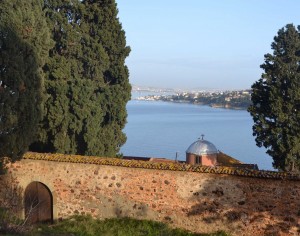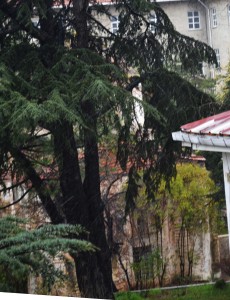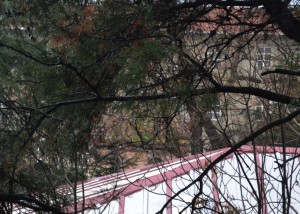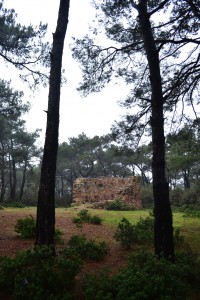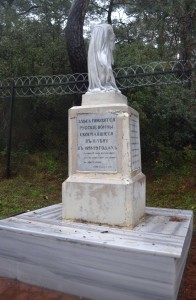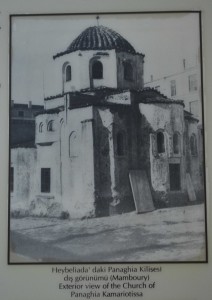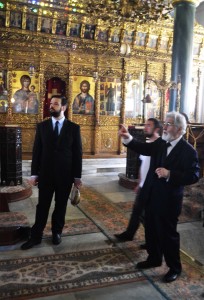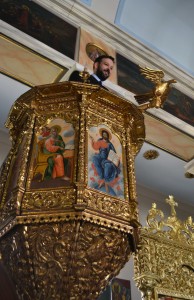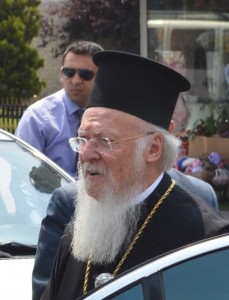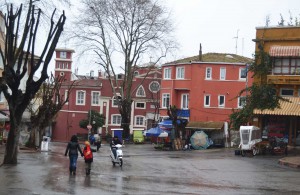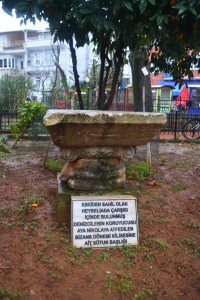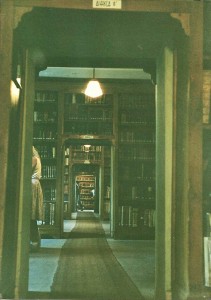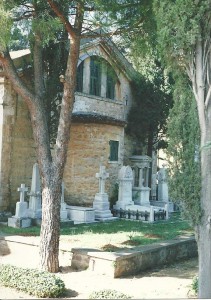Heybeliada, the Greek Halki, was active in Byzantine Christian circles. According to Mamboury, all of the hills were once crowned with monasteries. There are several monasteries today but the only real Byzantine church is stranded in strictly secular isolation.
In the centre of Heybeliada is a mysterious, intact Byzantine church from immediately before the Turkish conquest, the Church of Panaghia Kamariotissa (40.875371,29.086926). It was probably the last church to be built in Constantinople before the fall in 1453 and it looks similar to how St Mary of the Mongols might have been before all the alterations. It is in the middle of the Deniz Lisesi (what used to be the Orthodox orphanage for girls). Here’s a picture from 1937. A picture by Nicholas Artamonoff shows the interior in 1938. It was once the Katholikon of the Monastery of St John the Baptist which was probably founded in the 8th or 9th century.
The church is hard to see. The Deniz Lise is a military zone and resists invasion attempts by civilians like me. The best I can do is peer over the wall. Winter is the best time, when the deciduous trees lose their leaves. The conifers still hide most of it. These pictures were taken on a sleety day in January 2015.
There is an odd little cemetery to the west of the Naval School. In 1828, in the last years of the operation of the monastery, Russian prisoners from the Russo-Turkish war were kept here. Three hundred died and the three monuments here commemorate them. The central one has a now-headless angel and the tsar’s double-headed eagle, coincidentally the same emblem of the Palaeologus dynasty that had the Church of the Panaghia Kamariotissa built. After the war, the site was reopened in 1831 as a Greek business school. World War I saw the buildings requisitioned for military use then, after the Republican victory, they were used to house orphans of Greek parents who died in the euphemistically named population exchange of 1923. In 1942, the official texts say, the Orthodox priests ‘voluntarily abandoned’ the Kamariotissa. This strategic move enabled them to stay alive and to transfer the iconostasis to Aya Triada, at the time operating as the Theological School.
The site of the Kamariotissa is dominated by Değirmen Tepe. I climbed this hill in the hope of finding remains of the monastery mentioned by Mamboury. I should not have been surprised to find an Ottoman windmill. It was probably built with stones reused from the monastery ruins.
Heybeliada also has Aya Triada Monastery and the Theological School of the Patriarchate, closed by the government in 1970. This is on the loveliest site in the islands (40.88229,29.094973) and some bits of Byzantium can still be seen. I was taken there by a Turkish naval officer in 1990. The library was amazing, full of works by Archimedes and Anaximander, copies from after their lifetimes but still ancient.
The Church of Aya Nikola just above the ferry quay appears to have been built on the foundations of a Byzantine church also dedicated to Saint Nicholas.

Categories: Uncategorized | No Comments »
